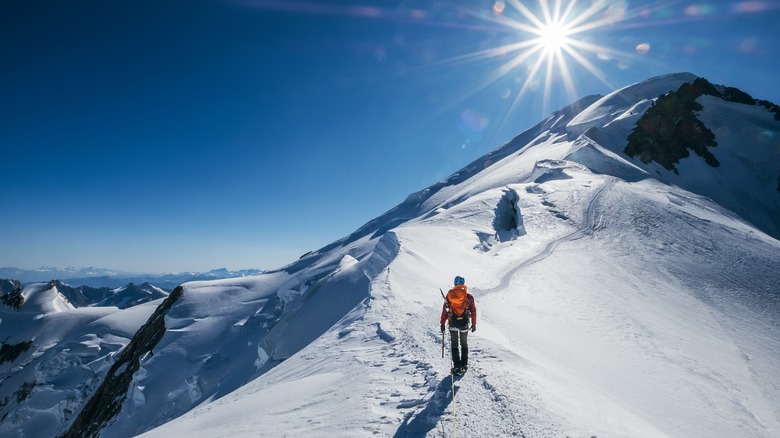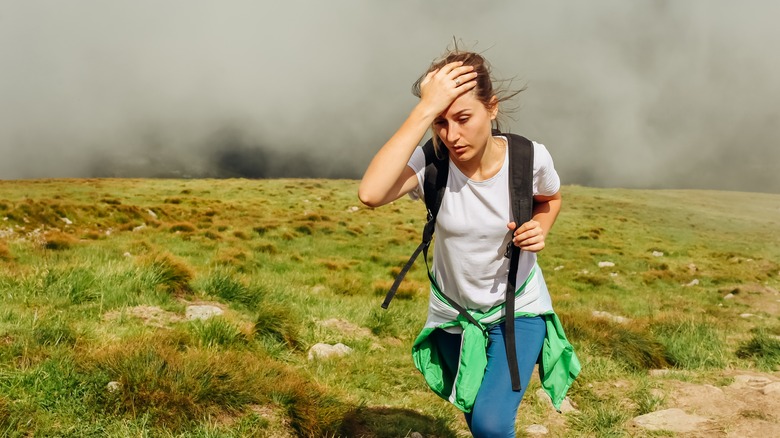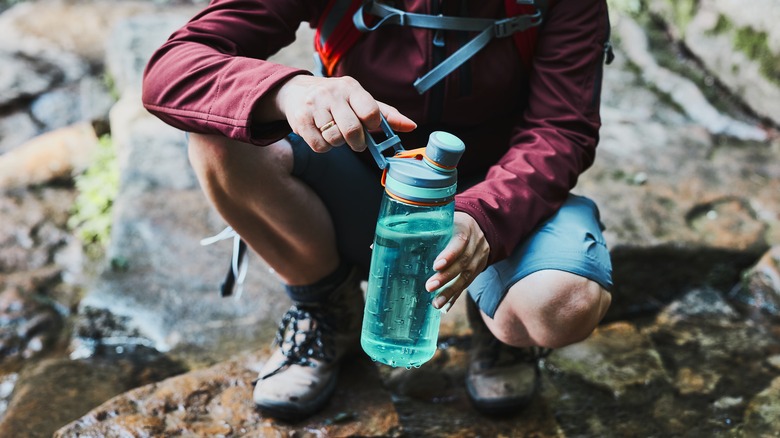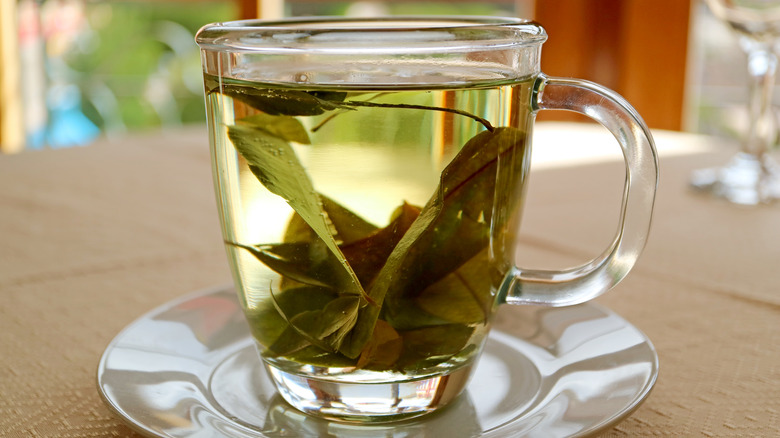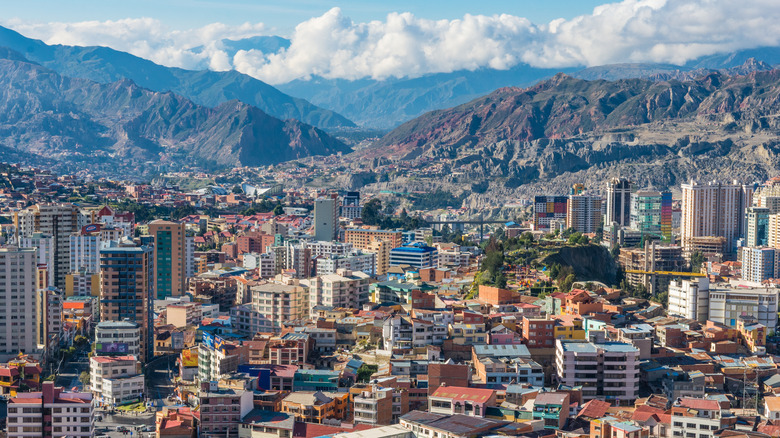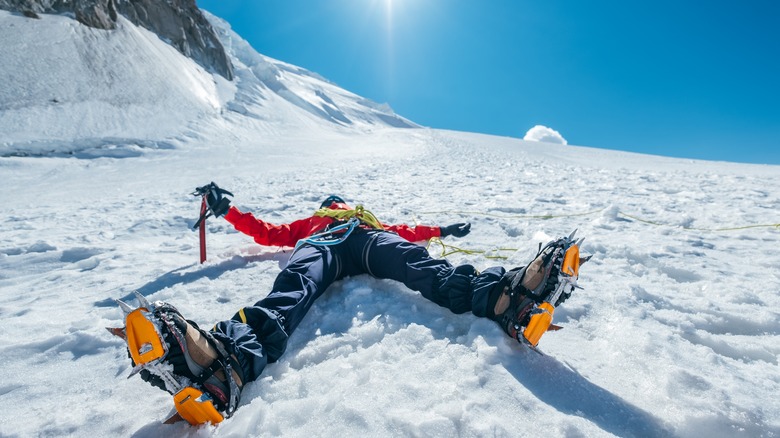How To Fight Altitude Sickness On Your Next Hike
Whoever came up with the phrasing "when the highs are high, and the lows are low" obviously didn't have altitude sickness in mind. From Cusco to Mt. Kilimanjaro to the highest elevation U.S. capital city of Santa Fe, sometimes you just can't escape it. And the best part is, you never think it'll happen to you ... until it does.
One minute you're breathing in that fresh mountain air (probably more rapidly than you're used to), and the next, you've got a raging headache, you're dizzy, and can't get out of bed. Kind of a buzzkill for your big mountain adventure, right?
Luckily, there are ways to prevent altitude sickness before it starts so you don't miss out on your big hiking trip. We'll share with you all the tips and tricks along with ways to deal with it when it happens, where it's most common to experience altitude sickness, and what to do if it gets worse.
What is altitude sickness, and how does it happen?
Altitude sickness, also known as altitude illness or mountain sickness, is a common condition that can occur if a person travels to a high elevation too quickly. The cause is mainly attributed to reduced air pressure and oxygen levels, which can be difficult on the body if it's not used to the decreased oxygen — especially if you live at lower elevations. The symptoms of altitude sickness are often compared to the flu and usually include fatigue, nausea, dizziness, shortness of breath, and trouble sleeping.
You may experience altitude sickness if you drive up a tall mountain in a single day and attempt to do a lot of physical activity the same day (along with a few other factors) or if you arrive to a high-altitude destination — such as Cusco, Peru — by airplane.
As far as who is more susceptible to altitude sickness, if you are not advised to ride a rollercoaster, you should take care when traveling to high elevations. To be more specific, if you have any heart or lung issues or are pregnant you may be especially susceptible to altitude sickness and should ask your doctor before making your travel plans.
Ways to prevent altitude sickness
Altitude sickness is a crappy reminder that we aren't invincible, but it doesn't mean it isn't preventable. And if not, at the very least, you can lessen the symptoms with a little bit of prep. One of the best ways to avoid experiencing severe altitude sickness is to slowly acclimate yourself to high elevations. Switch Back Travel suggests that for a hiking trip, plan out your overnight stays and your route so that you are slowly hiking from a lower elevation to a higher elevation each day, and sleeping at a lower elevation at night. You will also want to avoid making more than 1,500 ft (457m) elevation gains in a single day.
Another good piece of advice from the High Altitude Doctor, Peter Hacket, is to stay hydrated but don't overdo it. It's a common myth that you should be chugging down water to prevent altitude sickness, but in reality, you might actually make your symptoms worse by diluting the electrolytes in your body. So if you're normally pretty hydrated (light yellow urine), just drink a little more than usual to give your body a little boost, as it's working a bit harder to keep you oxygenated.
Lastly, stay well-fed and eat more carbohydrates. Again, your body is working at higher elevations because of the reduced oxygen, which means you're burning more energy, too, even at rest. By eating a bit more than usual, you might be able to fend off some symptoms of altitude sickness.
What to do if you get altitude sickness
If you follow the above advice and still get altitude sickness there are some things you can do to try to alleviate the symptoms. The first thing you'll want to do is go to a lower elevation if you can and don't go higher until your symptoms recede. Rest and take ibuprofen or acetaminophen for headaches.
While it can be tempting to just power through it, listen to your body and treat it well. This means no physical exercise while still experiencing symptoms and, while it might go without saying, don't use tobacco products or drink while in this condition. This will just exacerbate your altitude sickness.
In places where altitude sickness is common, natural remedies may be sold to both locals and foreigners. In South America, travelers are often told to try coca (made from coca leaves) or muña tea to alleviate mild symptoms of altitude sickness. While evidence of this is anecdotal, there are a few medical studies to back it up, so it might work. However, don't rely on this 100% if you continue to feel under the weather.
Regardless, your symptoms should improve in about 24 hours, and you should be completely free of symptoms in about three days after you've acclimated to the elevation. If you're experiencing more severe symptoms like shortness of breath when resting, inability to walk, confusion, a persistent wet cough, or other severe forms of disorientation, descend from your elevation and seek help immediately.
Destinations where altitude sickness is very common
Obvious places where you might experience altitude sickness would be on your ski trip to Breckenridge in the U.S., Zermatt in Switzerland, or Chamonix in France. At around 12,500 ft (3,800 m), these are some of the highest-elevation ski resorts in the world. However, none come even close to Jade Dragon Snow Mountain in China, which reaches a whopping 15,419 ft (4,700 m). It's safe to say you better take it slow if you plan to do much more than sit by the fireplace with a mug of hot cocoa.
Other destinations where it's very common to experience altitude sickness are located in South America. This continent is home to some of the world's highest cities, including the highest city in the world, La Rinconada, which comes in at around 16,732 ft (5,100m). However, unlike other cities, you can't fly directly into La Rinconada.
At well above 9,000 feet, cities such as Cusco (Peru), Quito (Ecuador), and La Paz (Bolivia) are well-known to cause travelers to experience altitude sickness since you're often flying straight to these destinations from lower elevations rather than driving or hiking to the summit of a mountain over the course of a few days. Definitely take it easy your first few days in these cities and try not to do too much wild partying or adventuring until you acclimate.
Other forms of altitude sickness and when to call a doctor
If it wasn't bad enough that you're bed bound for a day, wasting precious one-on-one time with nature, your altitude sickness can get worse. Now, it's pretty rare for someone to die of altitude sickness as long as you don't let your symptoms go untreated. You'd have to be a pretty tough nut not to realize you need medical help with the severity of the symptoms that can occur.
Altitude sickness is considered severe if your symptoms don't improve after a few days and get progressively worse with shortness of breath even at rest, inability to walk due to fatigue, weakness, nausea, etc., and confusion. This is why it's essential that you do not travel alone on trips like this, as you may not be able to get yourself medical attention if you end up with a severe case of altitude sickness.
At this point, you may have what's called HAPE (high-altitude pulmonary edema), which is a buildup of fluid around the lungs, or HACE (high-altitude cerebral edema) which is the buildup of fluid around the brain. Both of these conditions are severe and can present with a variety of symptoms. This includes a watery cough, vomiting, confusion, chest tightness, and a blue tinge of the skin, nails, and eyes.
So, on that happy note, don't let yourself get to that point if you can avoid it. Always play it safe, and get to a lower elevation ASAP, especially if you know you're a ways from help.
